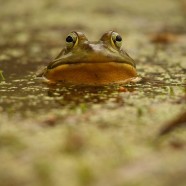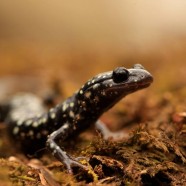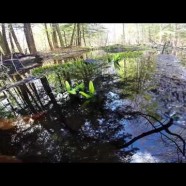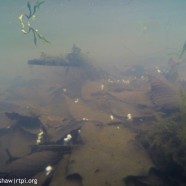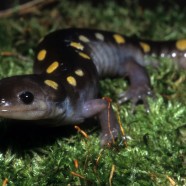American Bullfrog
Our birds aren’t the only thing popping up at this point in the spring as this American Bullfrog (Lithobates catesbeianus) by RTPI Affiliate Sean Graesser can attest to. What’s filling your pond right now?
Read MoreNorthern Slimy Salamander (Plethodon glutinosus)
Here’s a tremendous angle on the Northern Slimy Salamander (Plethodon glutinosus) by RTPI Affiliate Sean Graesser on a recent afternoon in New Jersey. What a gigantic world it must be to them…
Read MoreProductive Vernal Pools
Have you ever wondered what might be hiding just beneath the water’s surface in these temporary pools that crop up in early spring? This little clip reveals a productive vernal pool that has a number of spotted salamander (Ambystoma maculatum) egg masses nestled within the leaf litter of the pool floor. These pools are an important breeding area for several amphibian species, as you can see, because they provide a safe fish-less environment for the eggs and eventual tadpoles to...
Read MoreUnderwater World
While these little white puffs may look like little air pockets escaping from underwater volcanoes they are actually little spermatophores, or sperm packets produced by male spotted salamanders (Ambystoma maculatum), scattered across a vernal pool floor. As females arrive and enter ephemeral pools (sometimes up to a week after the males), males go into a frenzy. Typically the ratio of males to females in the pools is very skewed, with many males to every one female. This fuels some pretty intense male to male competition and very interesting sexual selection. Males surround females and nudge...
Read MoreCould Tonight be the Night?!
Tonight’s conditions are looking promising for amphibian migrations to begin as overnight temperatures will be above 40°F and rain is on it’s way. While humans don’t like to be out much during rainy nights, salamanders and frogs use these evenings to migrate in mass to their vernal breeding pools. With that said, be on the lookout for these special species whether you are hiking or driving and give them plenty of space as they make their way from their wooded hiding places to their watery breeding grounds.
Read More



